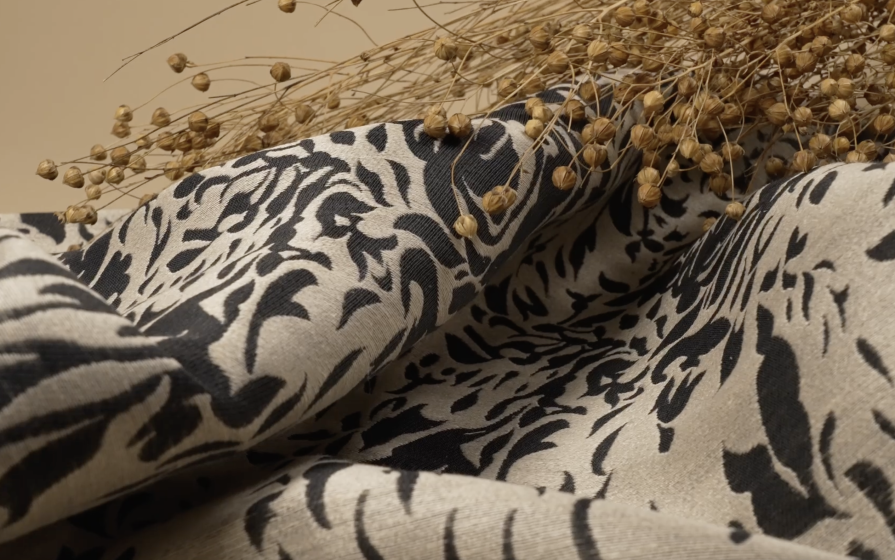Smart Key: How can we design sustainably? The - Première Vision Paris - Denim Première Vision - Première Vision New York
When imagining a piece of clothing, the designer’s job is to consider things like style, fit, comfort and quality. But in recent years, designers have had to factor in another key challenge: reducing clothing’s environmental impact. That’s because fully 80% of a garment’s environmental impact is determined by decisions taken at the design stage. So how do we design sustainably? A look at some main drivers for improvement, from the choice of raw materials to a garment’s manufacturing, repairability and recyclability.

1. Longevity
One of the first ways to leverage improvement is simply by improving product longevity, meaning the purchaser can wear the product for as long as possible. Right now, the low quality of products, combined with rock-bottom prices and the relentless lure of novelty, leads consumers to treat clothing almost as single-use items. But a quality product should be able to be worn for many years. Reuse is starting to be touted on social networks as a way of countering the disposable-fashion culture. Because the more a product is worn, the more its price and impact per use are lowered.
How to design a product that lasts?
The choice of materials is key. Quality textiles, especially those made with long-fibers, hold up better over time. Quality tests can attest to their abrasion resistance, tensile strength, color fastness, and absence of pilling.
The reduction of textile waste can be achieved early in the value chain, thanks to new material modeling techniques and 3D pattern-making, which reduce the number of prototypes needed for product development. Patternmaking can limit or even eradicate material waste, thanks to zero-waste cuts. Once in the production phase, improved volume management helps limit overproduction.
Read also: Smart Key: Sustainability – Is quality the ultimate key to circularity?
2. Second lives and Upcycling
Second-hand fashion is increasingly popular, giving rise to a whole new market. Resale is increasingly popular with a younger generation eager for unique designs, at lower cost and with less environmental impact.
Upcycling, on the other hand, involves creating new products from used clothing or deadstock. Upcycling produces a new design made from pre-existing materials. Along with avoiding the use of new materials, upcycling can provide an opportunity for young designers to create unique pieces using locally sourced and produced materials.
How can we plan ahead to give a product a second life?
Here again, good quality is of the essence. Resilient raw materials and good workmanship can help a garment last for years. Repairability is also central. This is a key issue for accessories and components, as for so long their technical defects have been responsible for shortening a garment’s life. Today, manufacturers offer repairable zips and snaps, which can considerably extend a product’s lifespan. Brands can also further this trend by proposing repair services for damaged knits, broken seams or tears.
3. Recycling
By now it’s obvious that industrial production rates are unsustainable. To get away from a linear production model in which clothes are produced, worn and discarded, research is moving towards more circularity, with the aim of conserving resources, particularly through recycling. So textile recycling is now a major focus, driven by a seemingly limitless supply of used textiles (every second, the equivalent of a garbage truck’s worth of clothing waste is thrown away or burned, i.e. 2,625 kg).
Recycling options are proliferating, making it possible to transform a used material into a textile, either mechanically or chemically. Wool has a long history of recycling, and recycled cotton is also frequently found in collections. These materials can also be sourced from other industries. Recycled polyester, for example, is essentially made from recycled plastic (or PET) bottles.
But the real challenge is developing closed-loop textile-to-textile recycling. Today, textile-to-textile recycling is still negligible, representing less than 1% of global textile production.

How to design and create a recyclable product?
The composition of a material has a major impact on its recyclability. Whether natural, artificial or synthetic, each type of textile material has its own way of being recycled. Today, it’s clear that the more types of fibers are blended together to make a material, the more complex, if not impossible, that material is to recycle. Mono-material products are preferable because they make recycling so much easier.
Accessories and components are another obstacle to recycling, as they often must be removed before the textile can be reused. To bypass this step, the first option would be to choose accessories made from the same material as the textile (like a polyester component on a polyester garment). If accessories are made from different materials, such as metal components, a new generation of detachable components can be used to facilitate end-of-life.
Read also: Smart Key: Recycling—can the fashion sector become self-sufficient in resources?
4. Biodegradability
It’s critical to consider what might happen to a garment when it reaches the waste stage. It must be capable of disintegrating as quickly as possible. In nature, organic waste deteriorates rapidly and nourishes the soil, thus creating value in the process. Textile waste, on the other hand, is a processed material, whose chemical composition and treatments result in much slower disintegration process. Textile waste piles up in open-air landfills, creating serious air, soil and water pollution.
How to speed up the biodegradation of a garment?
By sourcing materials that have been tested and certified for their biodegradability. Here, it’s important to beware of spurious claims. Natural fibers, for example, are biodegradable in their raw state, but are not automatically biodegradable once they’ve been processed (through dyeing, finishings or bonding). Synthetic fibers, on the other hand, which famously can take several hundred years to decompose, can now be found in fully biodegradable forms.
Biodegradability is a matter of eco-design: it’s a question of ensuring improved end-of-life degradation characteristics right from the product’s creation, rather than misleading the consumer by implying that the article will disintegrate easily.
Various parameters come into play: the environment (soil, seawater, freshwater), oxygen levels, pH, temperature, humidity and the micro-organisms activating the process. A distinction must be made between the terms biodegradable, compostable and industrially compostable. For example, to qualify as biodegradable, a product must disintegrate at least 90% in 6 months. These qualities must be backed up by tests and certifications such as “OK biodegradable”.
Claims such as “biodegradable”, “degrades in the environment”, “leaves no residue at end-of-life”, “eliminates naturally”, or other similar formulas are prohibited in France by the AGEC law on a product or its packaging.
In the European Union, with the adoption of the Green Claims Directive in March 2024, claims such as “biodegradable” must now be substantiated and verified within 30 days.
Read also: Smart Key: The key characteristics of biodegradability
So brands already have a number of tools at their disposal to design sustainably. They need to plan ahead and consider product longevity, second life, recycling and biodegradability. You can find these eco-responsible criteria on the Première Vision Marketplace, and at our next shows.
Sources:
https://www.wri.org/insights/numbers-economic-social-and-environmental-impacts-fast-fashion
https://ellenmacarthurfoundation.org/news/an-introduction-to-circular-design
https://www.premierevision.com/fr/magazine/smart-keys-la-biodegradabilite/
https://fashionunited.fr/actualite/mode/pourquoi-recycle-t-on-si-peu-nos-dechets-textiles/2022091630398
